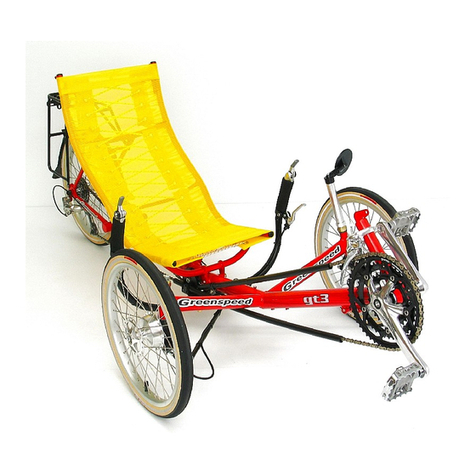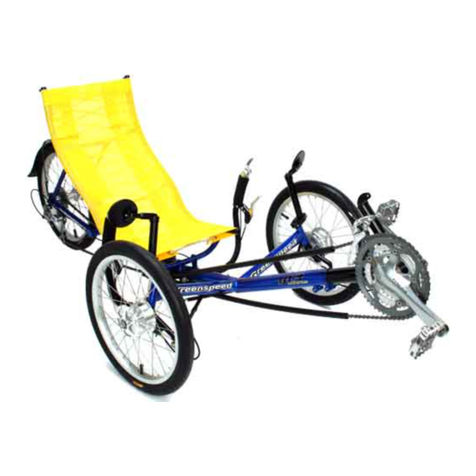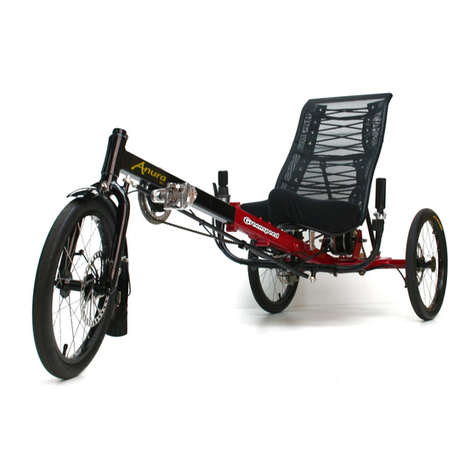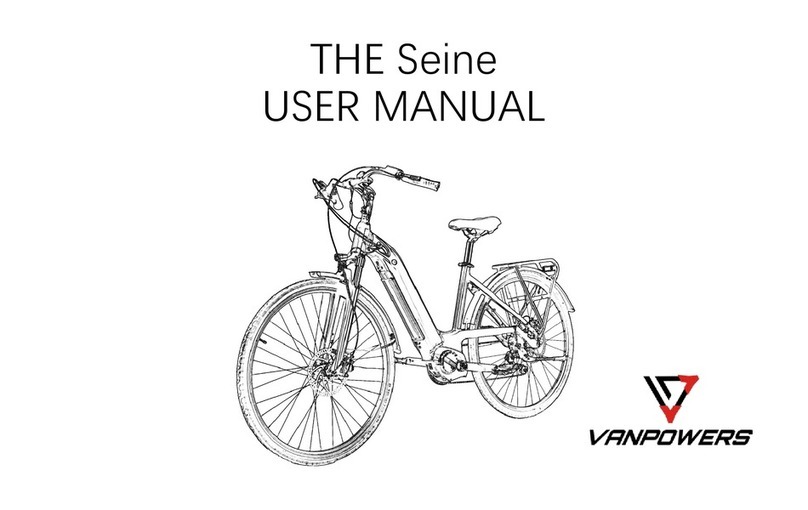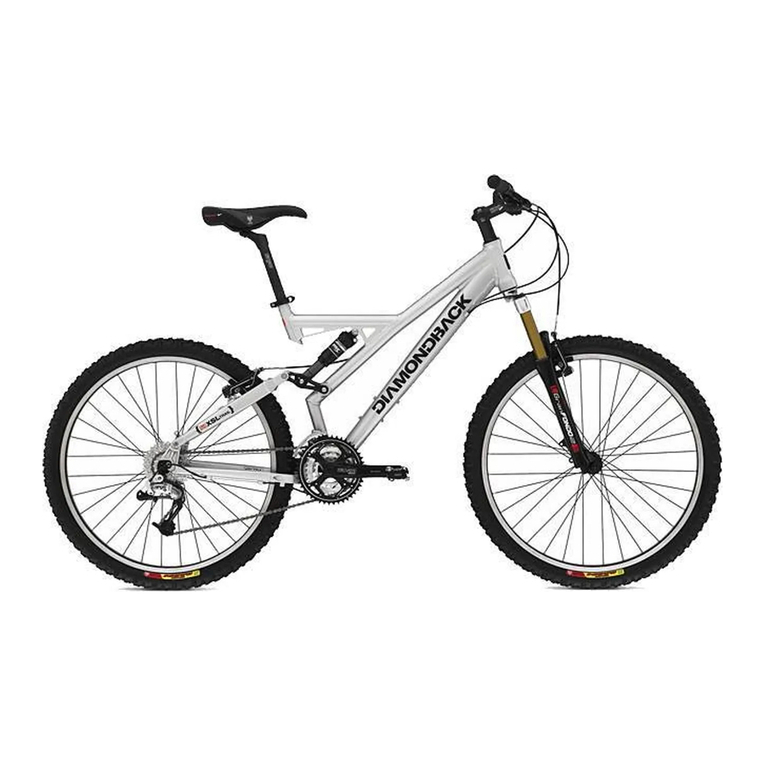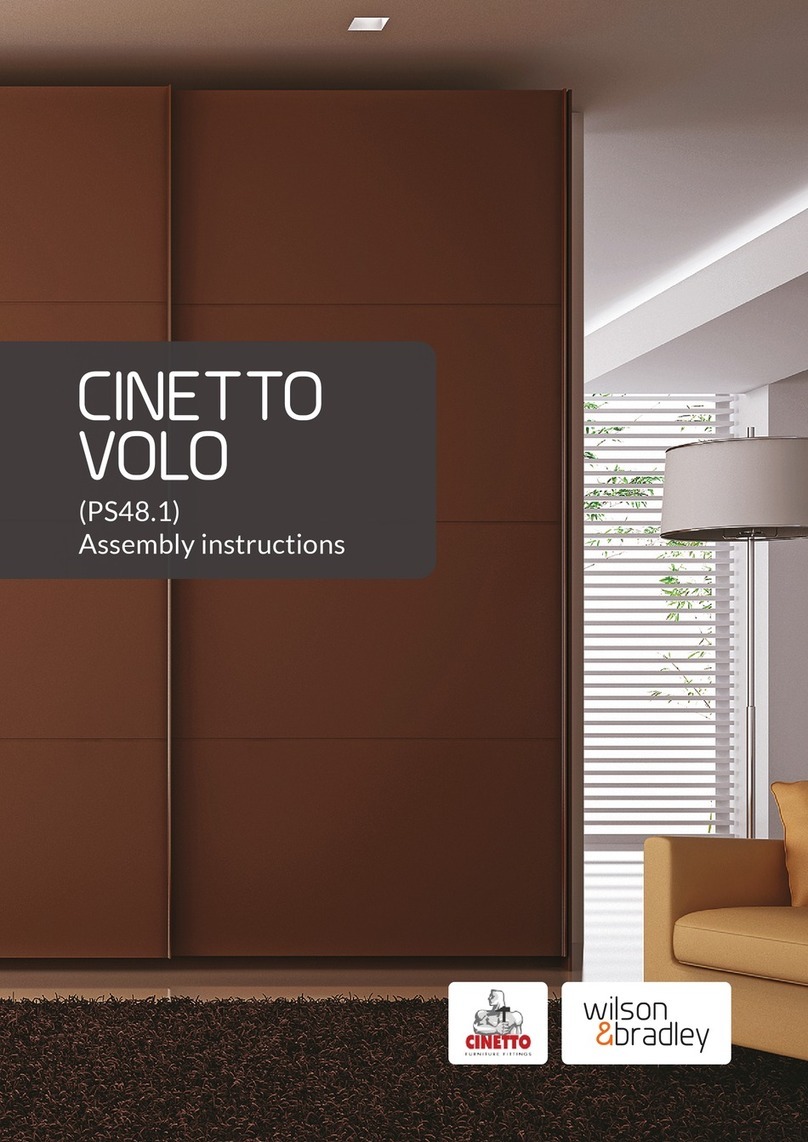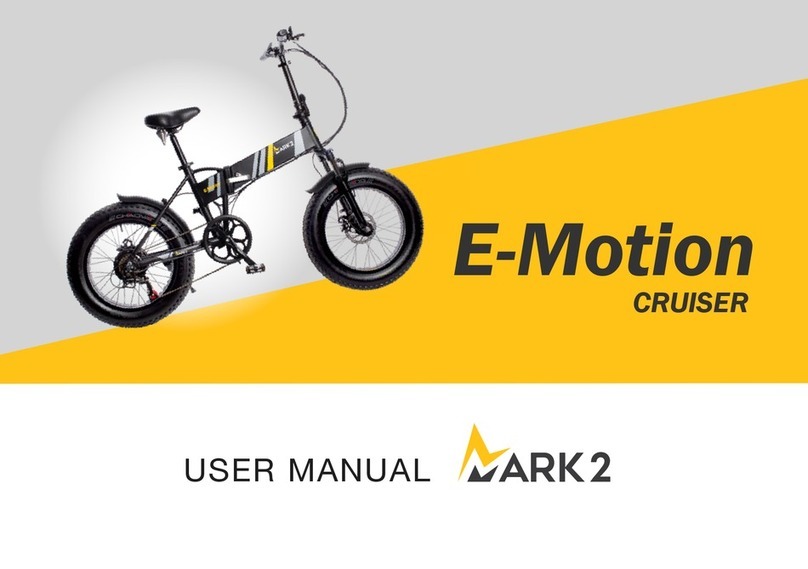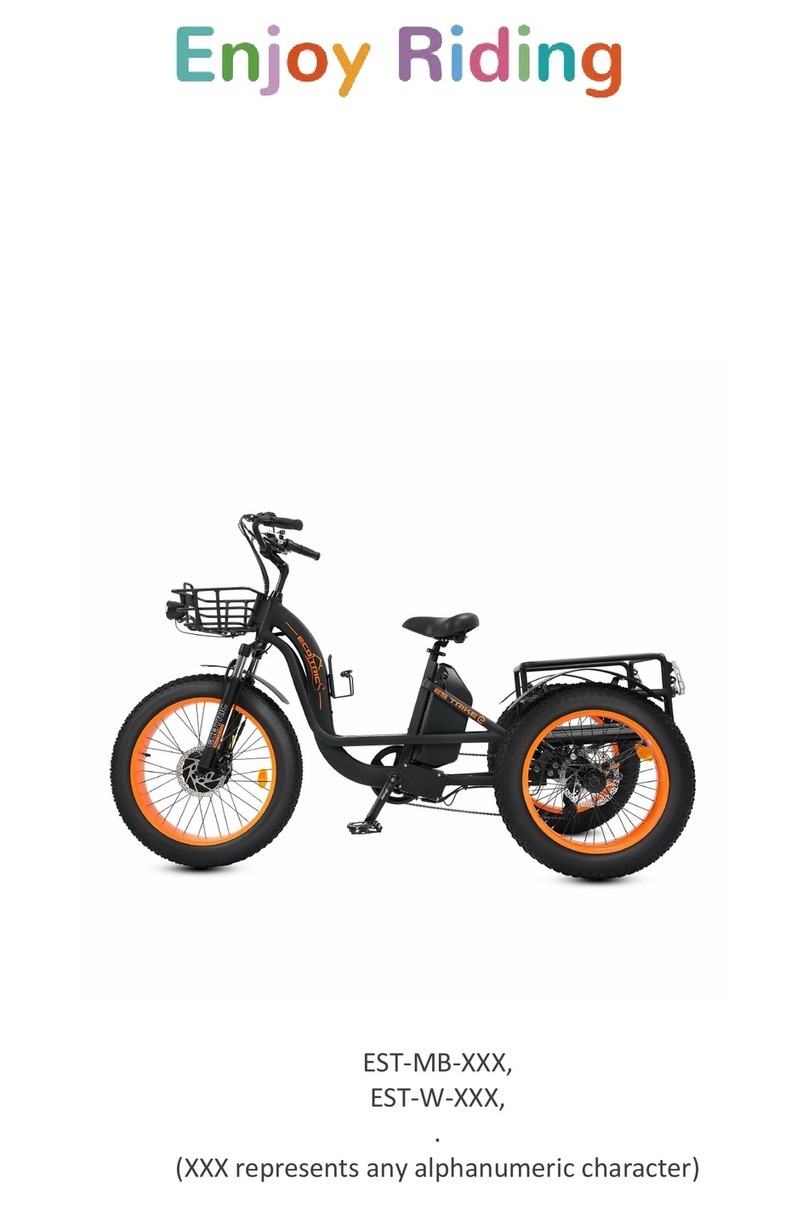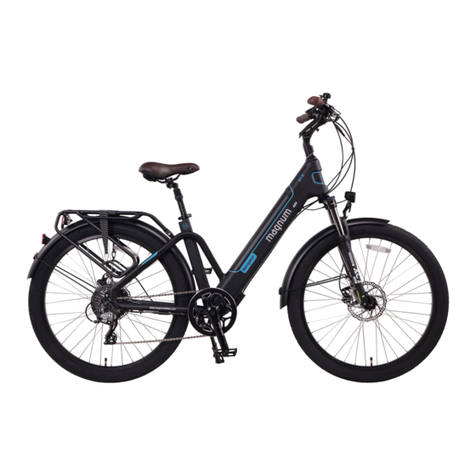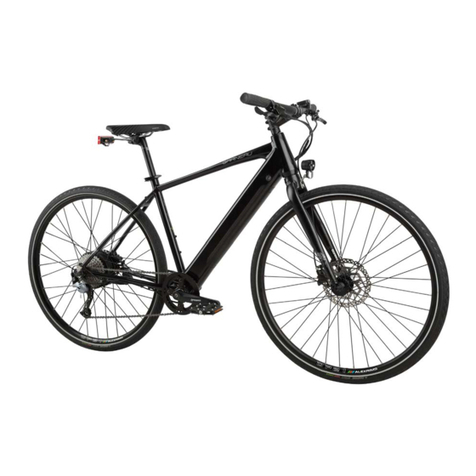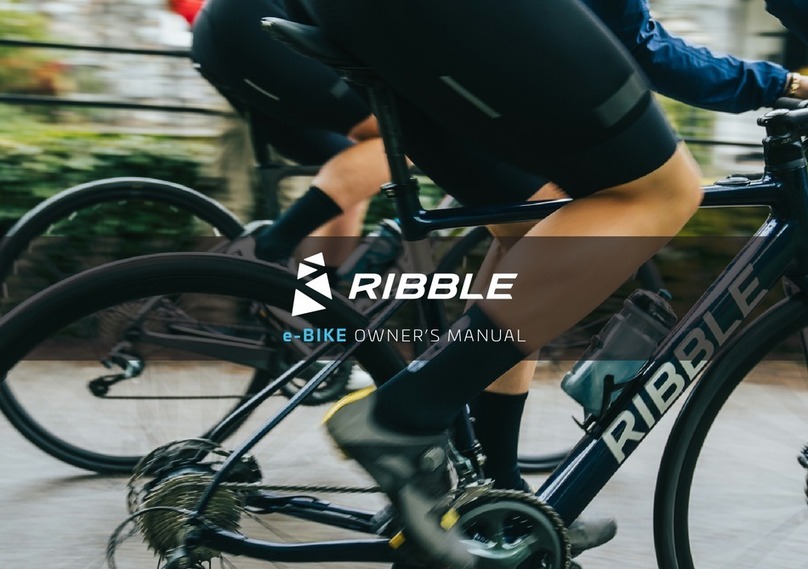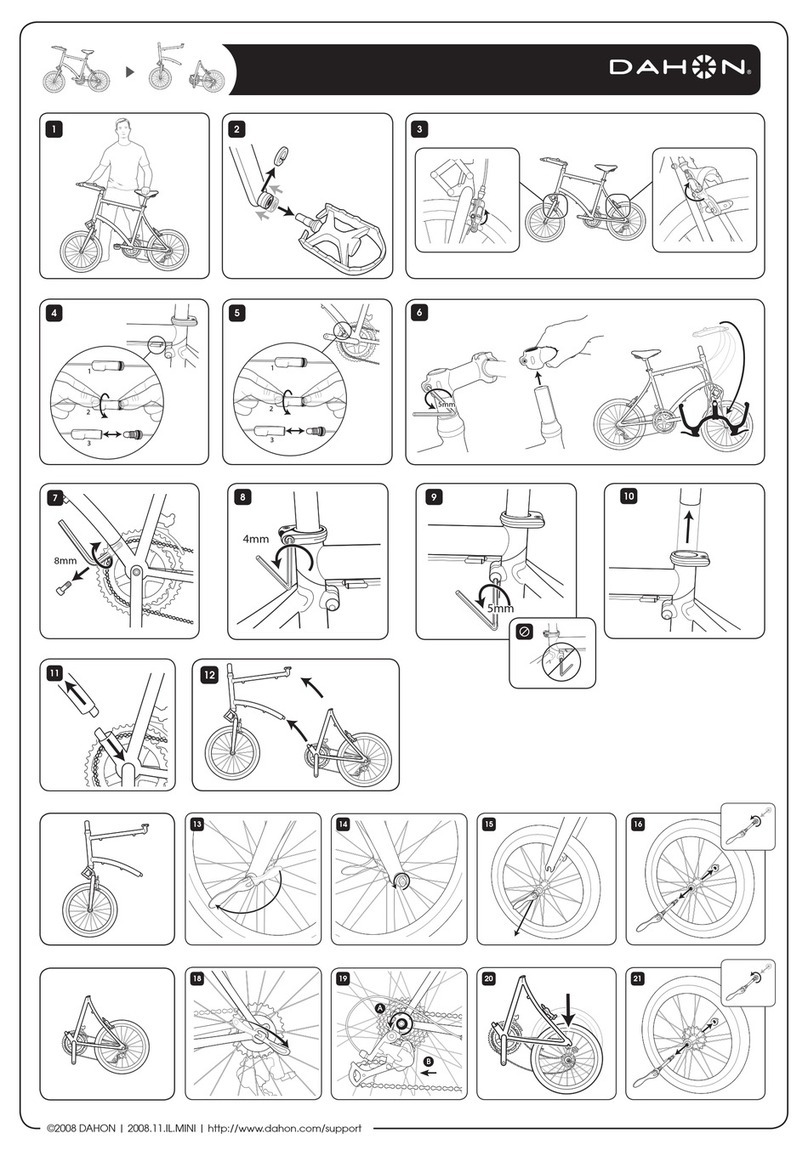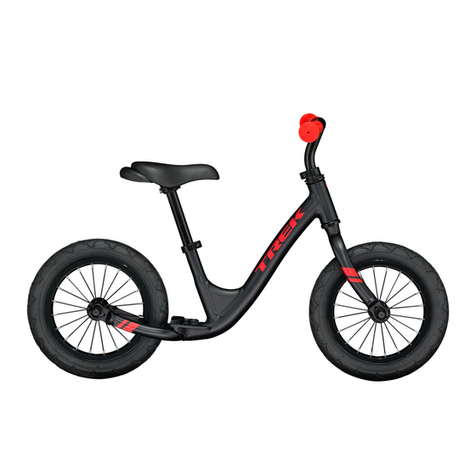Green Speed Anura User manual



Congratulations on your purchase of a Greenspeed Anura trike.
We believe that you have purchased the finest recumbent tricycle
available in the world today. It is also our belief that the present
level of motorised transport on this small planet is not sustainable,
in environmental and social terms. Thus your Greenspeed has been
designed for everyday use, whether it be shopping, commuting, touring
the world, or just exercising and having fun! With care, it should last a
lifetime.
Included in this manual are instructions on how to assemble,
maintain and get the most from your Anura.
2
3
3
4
6
7
7
8
8
9
10
10
design
tools
frame assembly
fir the wheels
fit the chain
fit the seat
fit the pedals
adjust the leg length
adjust the chain length
set the steering
attach the front brake
final check
11
11
12
13
14
14
steering
braking
using the gears
accessories
maintenance
resources
a s s e m b l y r i d i n g
1

The Anura is designed to be enjoyable to ride. The high seat with one
wheel at the front & two rear, make it easy to mount & dismount. The
high seat also gives a good view in traffic. The ergonomic placement of
the handlebars, and the attention paid to the steering geometry means
that it is effortless to steer.
The three wheel disc brakes give very powerful braking. The
combination of the Schlumpf speed drive & eight speed bar shifter
allows two speed shifting while stationary or under way and easy
shifting while riding.
The differential gives a balanced drive to both rear wheels which
enables it to turn easily in both directions, and track in a straight line
up steep hills. Finally, at the end of your trip, the trike will go through a
standard doorway and park vertically, taking up little space.
*A boss welded through the square section rear axle brace provides
an attachment point for attaching a trailer or another FROG with special
hitches available from your GS Dealer.
design

tools
3
If you have received your trike in a box, begin by carefully emptying it.
Once all the packing has been removed the fun starts. First MATE the
front part (with the forks & cranks) to the rear part (with the differential
& rear axles). Take care not to disturb the shims inside the rear section
when sliding the front section into the rear. Slide it about ½ way in &
tighten the two ALLEN screws to hold it in place during assembly.
Wrenches
Allen keys

Note that the wheels are handed with the right hand wheel spoked dif-
ferently to the left wheel, to give longer spoke life – see diagram & label
on the right wheel. The right hand side of the trike is the right hand side
with you seated on the trike, facing forwards.
fit the wheels
Outside spoke points to the left
Left hand wheel
Outside spoke points to the right
Right hand wheel
Hold the
wheel so that
the plain side
of the hub is
facing you.
Then look
at the top
outside spoke.
Fig 2

5
Remove the axle screw from the end of the axle, slide the wheel on,
engage the pins or Allen screw heads in the holes in the disc mounting
plate, and then put the axle screw back in and tighten it.
NOTE:- It may be necessary to try different positions in fitting the pins
into the disc plate, to get them to mate properly and go all the way in.
Now fit the skewer to the axle of the
front wheel if it is not already fitted.
Unscrew the nut & slide it through
the axle from the opposite side to
the disc, then screw the nut on until
the end of the nut is flush with the
end of the skewer.
Then fit the front wheel by carefully
sliding the disc into the brake cali-
per, and the axle into the dropouts.
Tighten the skewer nut finger tight
with the quick release lever straight
out.
Then turn the lever back to lock the
front wheel in place. This should
feel firm. If the lever is not locked
firmly, release it and tighten the nut
some more until it locks firmly into
place. Inflate the tyres to say 70 psi.
front wheel

fit the chain
Start by feeding the chain through the front of the top chain guide tube.
As it comes out the rear, guide it under the pulley and over the keeper.
Then go over the rear cogs and down through the rear derailleur. Guide
the other end over the front chain ring & through the lower chain tube.
Then join the chain together with the two split links. Make sure the chain
is not twisted. The chain will be loose to start with, but we will fix that
after the leg length is adjusted.

7
fit the seat
Next fit the seat by attaching it to the frame with an Allen screw from
each side, do them just snug for now, we will tighten them later. Use the
lower holes in the tag. Then fit the rear seat stays with the Allen screws &
nuts. Adjust the seat angle to your taste by loosening and then tighten-
ing the clamps on the seat stays. Then tighten the frame screws.
fit the pedals
Fit the pedals by lightly greasing the
threads and screwing them in. Fit the
shifting plates under the pedals if de-
sired. The right hand pedal has a right
hand thread which tightens clockwise,
and the left hand one has a left hand
thread which tightens anti- clockwise.
Please make sure that they are tight.
to tighten
Fig 8

adjust the leg length
Sit on the trike to check your leg length. With both your legs and the
pedals fully extended your heel should just touch the pedals. If this is
NOT the case, loosen the clamping screws on the rear frame & move the
front frame in or out until this is the case. Make sure to check under the
frame’s front section to make sure that you have not exceeded the max
point.
NOTE: – Once you ride the trike you may want to adjust this position
some more until it feels right for you.
adjust the chain length
The chain should only be adjusted
once the front frame has been set for
the right leg length. Move the chain
to the smallest sprocket & see if the
rear derailleur cage matches the posi-
tion here in fig . If the cage is too low
you need more chain, and if it is too
tight you need to take some chain
out. If you do not have a chain tool,
you may need to see your dealer.
Fig 9

9
set the steering
Loosen the clamp on the handlebars and adjust them to a comfortable
position. NOTE they need to be done up fairly tight to prevent unneces-
sary movement. Some movement under duress is acceptable in case of
an accident, but they should NOT be used for leverage in getting on or
off, or in pedalling.
Then fit the steering rod on to the handlebars and to the front forks with
an Allen screw through the rod end at each end. The thicker section with
the bend goes to the rear of the trike, and the bend points in towards
the frame, so that the rod is closer to the frame.
Loosen the clamp on the rod &
adjust the length of the rod until
the front wheel points straight
ahead with the handlebars at
right angles to the main tube.
�

attach the front brake
Start by twisting the barrel screw and locking ring around so the slots
line up. Squeeze the brake lever to open it up and place the head of the
cable into the lever cradle. Place the black outer cable into the barrel
screw and close the slot by twisting the barrel screw and locking of the
locking ring, hand tight only.
final check
Check all screws & nuts to make sure they are tight.
Check the brakes & steering to make sure they work OK
If you have cable issues with the
cable fixed to the frame, you can
cut that tie and instead attach it to
the steering rod. Place two zip ties
onto the steering rod as shown.

11
steering
The three wheel disc brakes fitted are very powerful so they should be
used carefully. The right hand lever operates the two rear brakes, and the
left hand lever operates the front brake.
For gentle braking, like slowing for a corner, either lever may be used, as
this will allow the other hand to be used for signalling. For most braking
it is best to get into the habit of using both hands, as both are required
for emergency braking. Please be careful braking in a turn, especially
going downhill, as the trike is more likely to tip under those conditions.
Once you have stopped, both levers are fitted with locking buttons. Just
squeeze the lever and press the button to stop the trike from rolling away.
With its higher seat & narrower width than our “tadpole” (two front. one
rear wheel) tricycles, the ANURA is not as stable, and care should be
taken in cornering so as not to tip it over.
We recommend that you experiment in riding it in an empty car park to
see how quickly you can turn without tipping it right over. Please wear
gloves for safety while doing this.
Leaning into the turns will enable you to turn quicker without tipping.
Note that once one of the rear wheels lifts off the road, the drive (pedal-
ling) will be lost until two wheels contact the road again.
braking
Left hand turn riding in a straight line Right hand turn
Fig 15

using the gears
The purpose of trike gears is to match the rider’s efforts to the condi-
tions, making it easier and more enjoyable to ride. The low gears make
it easier to pedal uphill without having to push too hard, and the higher
gears enable you to go faster downhill and with the wind, without hav-
ing to pedal too fast. The gear lever on the top of the right hand handle-
bar (left UK/Australia if using a mirror) operates the rear derailleur which
changes the chain on the eight rear sprockets (cogs). Pulling it back will
move the chain to the large cogs, giving you a lower gear & making the
trike easier to push. Pushing the lever forward moves the chain to the
smaller cogs, so you can go faster. However the chain will only change
cogs while you are moving, so it is a good idea to move the lever back
before you stop, and while you are still pedalling, so you will have a low
gear when you next start off again.
The Trike is also fitted with a SCHLUMPF SPEED DRIVE. This is a TWO
SPEED front drive which can be changed at rest, or in motion. It is
changed by kicking the side of the crank with the heel, with the foot on
the pedal, even if you use clipless pedals. In the normal position with the
left crank in, it is in direct drive or low gear. With the right hand crank in,
it is in high gear which is 65% overdrive. Make sure the left hand crank
is in before starting off, and then if
when riding you find yourself hav-
ing to pedal too fast even with the
right hand gear lever all the way
forward and the chain on the small-
est cog, then pause pedalling and
kick the right hand crank in. This
will have the effect of going up the
equivalent of 3 gears on the lever,
so you may need to then go back
on the gear lever to find the best

13
gear for the conditions. When in high gear with Speed Drive you find it
too hard to pedal, even with the gear lever right back, kick the left hand
crank to change the Speed Drive to low.
It is good practice to change down as you come to a hill, so that you are
not struggling, because once you stop you will be unable to change the
rear gears. NEVER try to change the rear gears when the trike is rolling
backwards, as this may damage the derailleur!
accessories
Accessories can expand the usefulness of your trike and therefore you
horizons. We have developed and tested a range of products that we
believe will make your trike a more practical vehicle.

Other manuals for Anura
1
Table of contents
Other Green Speed Bicycle manuals
